Choose your specialty from the list below to see how our experts have tackled a wide range of client questions.
Looking for something specific? Utilize our search feature by typing in a key word!
Use of 15740 for Closure Following Pituitary Tumor Excision
Pituitary tumor excision CPT 62165-62. The ENT surgeon also performs a pedicled flap (15740). The neurosurgeon performs a fat graft for the closure. Can 15740 also be billed for the ENT surgeon, and if so, would a 59 modifier be needed?
Question:
My physician performed a pituitary tumor excision and reported CPT code 62165-62. The ENT surgeon also performs a pedicled flap (15740). The neurosurgeon performs a fat graft for the closure. Can 15740 also be billed for the ENT surgeon, and if so, would a 59 modifier be needed?
Answer:
In skull base cases, when the ENT harvests a nasoseptal flap to repair or prevent a cerebrospinal fluid (CSF) leak during an endoscopic pituitary excision, this work is considered part of the procedure. According to CPT Assistant (December 2017, page 14), closure of a CSF leak—including the use of a nasoseptal flap—is included in the work described by 62165 and should not be separately reported. Therefore, 15740 would not be separately billable in this scenario, and modifier 59 would not apply.
*This response is based on the best information available as of 12/18/25.
Bundling of Drug-Induced Sleep Endoscopy and Turbinate Procedures
Can you explain why the sleep endoscopy 42975 and any turbinate procedure is bundled? The procedures are done for two completely different reasons—OSA and turbinate hypertrophy.
Question:
Can you explain why the sleep endoscopy 42975 and any turbinate procedure is bundled? The procedures are done for two completely different reasons—OSA and turbinate hypertrophy.
Answer:
Although CPT® 42975 and turbinate procedures (30801/30802) address distinct clinical conditions such as dynamic airway collapse in OSA versus nasal obstruction from turbinate hypertrophy, they are bundled under National Correct Coding Initiative (NCCI) edits due to shared anatomical access and procedural overlap.
Additionally, CMS coding policy states that when a diagnostic procedure leads directly to a therapeutic intervention during the same operative session, only the therapeutic procedure should be reported. The diagnostic service is considered part of the decision-making process and is not separately reimbursable.
According to CMS and NCCI guidelines, CPT® codes 30801 and 30802 cannot be separately reported when performed in the same session as other nasal or sinus procedures, including:
For access to the nose or sinuses
For control of intraoperative bleeding
When performed concurrently with other nasal procedures
Importantly, modifiers such as 59 or XU are not permitted to bypass this bundling, even if the procedures are performed for separate indications. It is important to remember that turbinate hypertrophy can contribute to sleep-disordered breathing, including OSA. The coding system treats these procedures as components of a single encounter when performed together, and separate reimbursement is not allowed.
*This response is based on the best information available as of 12/04/25.
Pediatric ENT Consultation
Our internal compliance team states that our pediatric otolaryngologists should never bill for a consultation. This is because the description in the 2025 CPT states "Services that constitute a transfer of care (i.e. are provided for the management of the patient's entire care or for the care of a specific condition or problem) are reported with the appropriate new or established patient codes." I have explained that when a pediatrician refers a patient to us for ear infections, we give our opinion on what treatment is needed, perform surgery and then send the patient back to the pediatrician. If the patient has another ear infection, we ask that they see their pediatrician for management of the acute infection. I argue that what we do does not constitute a "transfer of care". They suggested I reach out to KZA for clarification. Thank you!
Question:
Our internal compliance team states that our pediatric otolaryngologists should never bill for a consultation. This is because the description in the 2025 CPT states "Services that constitute a transfer of care (i.e. are provided for the management of the patient's entire care or for the care of a specific condition or problem) are reported with the appropriate new or established patient codes." I have explained that when a pediatrician refers a patient to us for ear infections, we give our opinion on what treatment is needed, perform surgery and then send the patient back to the pediatrician. If the patient has another ear infection, we ask that they see their pediatrician for management of the acute infection. I argue that what we do does not constitute a "transfer of care". They suggested I reach out to KZA for clarification. Thank you!
Answer:
CPT 2025 has removed previous language related to "transfer of care" from the consultation code section. Most payors no long accept consultation codes and require you to use problem-oriented E/M codes, but there still a few payors who pay for consults. CPT now emphasizes that consultation codes can be used when the criteria for a consult are met, regardless of whether the patient is new or established.
According to CPT, a consultation is appropriate when:
A physician requests another physician’s opinion or advice regarding diagnosis or treatment.
The consulting physician provides that opinion and communicates back to the requesting physician.
The consulting physician does not assume ongoing care for the condition.
The pediatrician refers the patient for evaluation and possible surgical treatment in your case. Your team provides an expert opinion, performs the surgery, and then returns the patient to the pediatrician for ongoing care. You do not manage the patient’s long-term treatment for recurrent infections. This aligns with the definition of a consultation rather than a transfer of care. The fact that you send the patient back to the referring provider and do not assume continuous management supports your use of consult codes. It is important to check with your individual payor to determine if they accept consultation codes or if they require problem-oriented E/M codes.
*This response is based on the best information available as of 11/20/25.
Reshaping of the Internal Nasal Valve Region
My physician has started doing repairs for nasal valve collapse using low energy radiofrequency. We have been using the unlisted code 30999. Another coder told me that is no longer the correct code. Can you help?
Question:
My physician has started doing repairs for nasal valve collapse using low energy radiofrequency. We have been using the unlisted code 30999. Another coder told me that is no longer the correct code. Can you help?
Answer:
There is a CPT code 30469 for reporting remodeling of the nasal airway using low energy temperature controlled radiofrequency which was previously reported with the unlisted code 30999.
*This response is based on the best information available as of 11/06/25.
Needle Aspiration of Peritonsillar Abscess: Choosing the Correct CPT Code
Can you explain Peritonsillar Abscess billing 42700 vs 10160? Can we bill and defend 42700 if a provider does an FNA to evacuate a PTA?
Question:
Can you explain Peritonsillar Abscess billing 42700 vs 10160? Can we bill and defend 42700 if a provider does an FNA to evacuate a PTA?
Answer:
When a provider performs fine needle aspiration (FNA) to evacuate a peritonsillar abscess (PTA), the correct CPT code to report depends on the intent and technique of the procedure.
If it is truly a FNA and performed for diagnostic purposes, such as collecting a specimen for cytology or pathology, then CPT 10021 (Fine needle aspiration biopsy, without imaging guidance; first lesion) is appropriate.
If the provider uses a needle to evacuate pus from a peritonsillar abscess then this is considered a therapeutic aspiration, and CPT 10160 (Puncture aspiration of abscess, hematoma, bulla, or cyst) is the correct code.
According to CPT Assistant, February 2008, Volume 18, Issue 2, pages 8–9: "From a CPT coding perspective, an incision must be performed in order for an incision and drainage procedure to be reported; an aspiration procedure does not involve an incision.”
Therefore, CPT 42700, which describes incision and drainage of abscess; peritonsillar, is not appropriate unless an actual incision is made into the PTA.
*This response is based on the best information available as of 10/23/25.
Sleep Endoscopy
Can I report a nasal endoscopy with a diagnostic drug induced sleep endoscopy?
Question:
Can I report a nasal endoscopy with a diagnostic drug induced sleep endoscopy?
Answer:
No, when reporting CPT code 42975 for a diagnostic drug induced sleep endoscopy you cannot report a nasal endoscopy 31231 unless it is performed for a separate condition other than sleep disordered breathing and using a separate endoscope.
*This response is based on the best information available as of 10/09/25.
Do you have a Coding Question you would like answered in a future Coding Coach?
If you have an urgent coding question, don't hesitate to get in touch with us here.

